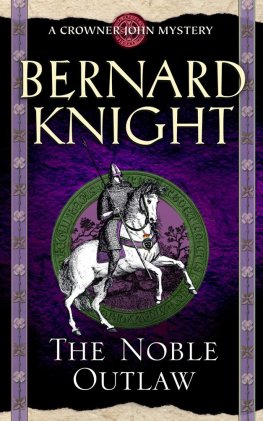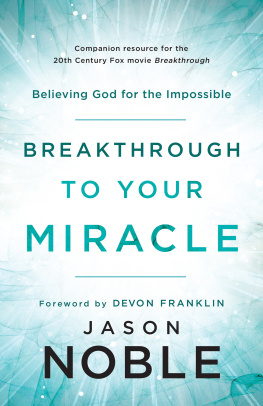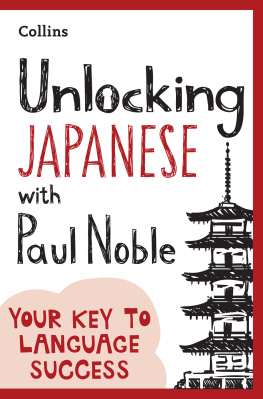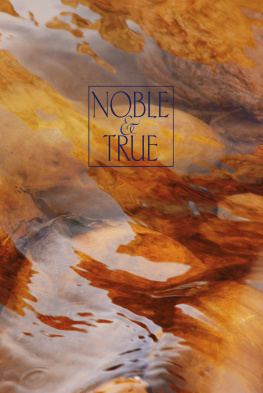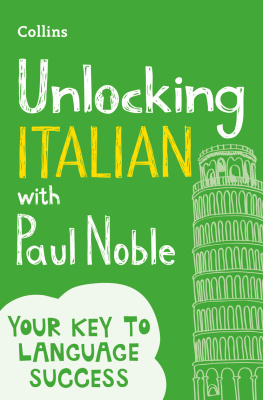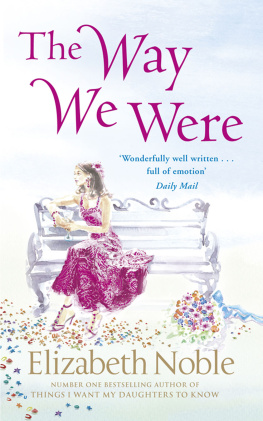
Foreword copyright 1987, 2013 The Maurice Noble Estate.
Preface copyright 1987 by The Chuck Jones Center for Creativity.
Text copyright 2013 by Tod Polson.
constitutes a continuation of the copyright page.
LOONEY TUNES including BUGS BUNNY, DAFFY DUCK, ROAD RUNNER, WILE E. COYOTE, PEPE LE PEW, ELMER FUDD, SAM SHEEPDOG, MARVIN THE MARTIAN, and RALPH PHILLIPS used courtesy of Warner Bros. Entertainment Inc.
All rights reserved. No part of this book may be reproduced in any form without written permission from the publisher.
ISBN 978-1-4521-2738-5
The Library of Congress has cataloged the print edition as follows:
Polson, Tod, 1971
The Noble Approach: Maurice Noble and the Zen of animation design / by Tod Polson.
pages cm
Includes index.
ISBN: 978-1-4521-0294-8
1. Noble, Maurice. 2. Animated films--United States.
3. Animation (Cinematography)--United States. I. Title.
NC1766.U52N637 2013
791.4334092--dc23
2012031595
Designed by Cat Grishaver
Chronicle Books LLC
680 Second Street
San Francisco, California 94107
www.chroniclebooks.com
Contents

BY Chuck Jones
BY Maurice Noble



Maurice as the timid matador in Bully For Bugs (1953). Layout by Chuck Jones


Note from Chuck Jones to Maurice Noble, date unknown
To the grandson he hoped could come to know him a little better through these pages...
... and for all those still creating with passion, for no other reason than the joy of it.
PREFACE
I Have Sent for You, Dodgers!
Chuck Jones on Maurice Noble
If you describe Maurice as he would appear in the telephone book, you will have an exact idea of my respect and love for him.
But I tell you what he was not. He was not my good right arm.
My good right arm. What a splendid term. How nice it must be to be called a good right arm by your director if you are a writer or a layout man or a lead animator.
Theres only one drawback: a right arm, or a left arm for that matter, is stupid. It has no volition of its own. It only does what the prejudice and predilection of the director tells it to do.
As a right arm, Maurice Noble was an absolute failure. He had ideas, which is a pretty stupid thing for a right arm to have. His sense of color and design was, and is, vastly superior to mine, which, in a right arm, should be suicidal. He has a superb sense of humor, which is, in normal circumstances, almost profane for a right arm or a layout man.
But fortunately for Maurice and fortunately, to the point of survival for me, I had discovered years before he magically appeared in my unit that there are only two kinds of talent worthy of identification: one that you find, if you are very lucky, as a small, scrabbly little talent within yourself (this is the one you continually doubt and always, if you make any claim to artistry, of which you are constantly suspicious) and two, the talent to surround yourself with talent. Of the two, the only one I am confident that I possess in abundance is the second.
If a lawyer who defends himself in court has a fool for a client, then a director who tries to acts as his own background or layout man, lead animator, or sound editor is doomed to be spastically handicapped by his own limitations. It is not only necessary that he hire people in each department (except direction) of talent superior to his own, he must demand that each of them approach the same problem with a different background and viewpoint. For myself, I do not want a writer who thinks he is a director. I want him to have the confidence, and the knowledge, to know that I consider him far better at his job than I am. Mondrian said that the supreme joy of artistry is working within a discipline. Mike Maltese, Ken Harris, Ben Washam, and Maurice Noble, among all those many uniquely talented people I worked with, knew because I tried to exhibit it in the only form of respect and honor I understand how necessary to the final film was their confidence in the contributions they made through their individual disciplines and artistries.
Maurice seldom tried to provide animation gags per se, but he created a world where animation could flourish. If, for instance, in Whats Opera, Doc? he felt there was a lack of the flesh and frippery common to classical ballet, he designed the backgrounds in flesh tones and the trees as tutus. If, as in one of the Martianouter space films, he got tired of all those film-studded mysterious planets, he simply designed a city of delicately hued transparent plates floating in space. In Duck Dodgers in the 24 Century, whose production design was freely asserted by George Lucas as having been a great stimulus to his Star Wars films, Maurice designed a forty-story rocket ten years before John Glenn had graduated from high school and vastly superior in design to anything seen at Cape Canaveral, plus the only gantry crane worth viewing.
Maurices visual jokes never intruded on the orderly advance of the storyif any story I ever directed could be called orderly.
He enhanced every story. He stimulated all who worked with him. He always used the concerto form: once he was on board with the story intent, every inspirational sketch he contributed was a variation on a theme. He never showed off, but he showed up every layout man I have ever known by his honesty, his devotion to his craft, and his devotion to the film at hand. This is never more vividly demonstrated than in Whats Opera, Doc? Without Maurice Noble, who excited, moved, and stimulated us all, that film could not have been made.
As the scientist said to Daffy in Duck Dodgers, I have sent for you, Dodgers, because the world supply of great layout men is appallingly low.
CHUCK JONES
LOS ANGELES, CALIFORNIA
1987
(From the introduction to Maurices Winsor McCay Lifetime Achievement Award, presented by the International Animated Film Society for creative excellence in the field of animation.)
FOREWORD
Designing for Animation
While there has been much written about the art and techniques of animation, little has been said about the overall look and backdrop that animated characters play against. To be more specific: the art direction, staging, design, and layout of an animated film. Over the past few years I have had the pleasure of coming out of retirement and sharing my knowledge and experiences with a whole new generation of young people. Many have asked me to write down some notes on design, and the Noble approach.
Next page

